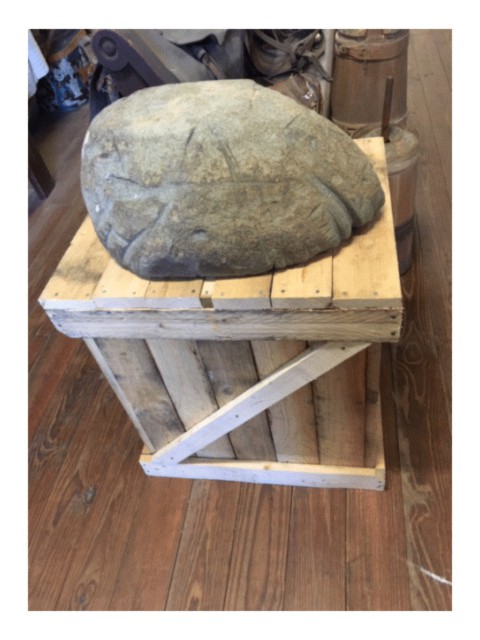Hidden in a dark corner of the Museum of Old Domestic Life for many years was a large greenish rock which was brought here from the Allen U. Tomlinson farm. The rock has an arrow roughly gouged into one side. According to oral legend, the rock was a marker on the Underground Railroad, pointing to the next “station” or safe house.
Many Quakers at Springfield sympathized greatly with slaves. In the early 1800’s, hundreds of Quakers from North Carolina moved to the “free states” of Ohio, Indiana and Illinois in order to disentangle their lives from the slave-based economy.

The Underground Railroad was secret and highly illegal. Extremely high fines of $1,000 were meant to bankrupt anyone who dared to help an escaping slave. (To give you an idea, the average wage for a working man was only $1 a day, so a $1,000 fine was nearly 3 years of income!)
Allen Jay and his family worked on the Underground Railroad when he was a boy. His account in his Autobiography is one of the few written records of what it was like to help on the Underground Railroad.
We have built a new stand for the “Freedom Stone” and moved it to a more visible location. The stand is made of rough boards and is shaped like a packing crate in memory of Henry “Box” Brown (1815-1897), a daring and ingenious slave who escaped to freedom by having himself nailed up in a small shipping crate and mailed to Philadelphia. The box in the museum has air holes bored in the side to allow a person to breathe.
